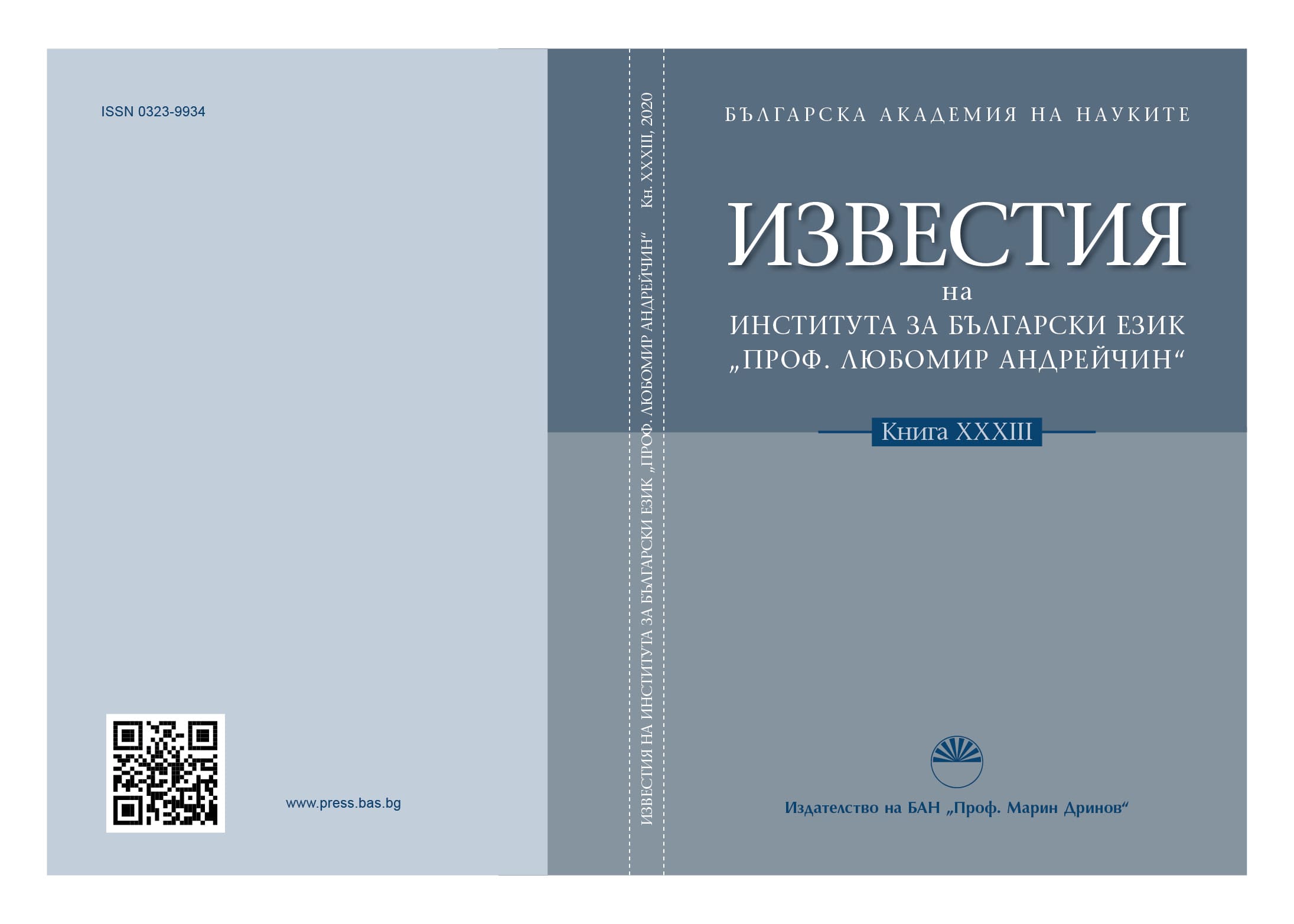
Пояснените думи в среднородопските възрожденски писмени паметници с гръцко писмо (Особености и тенденции в речниковото вариране)
Rhodopean revival; history of Bulgarian language; Rhodope revival written tradition; lexical features
More...We kindly inform you that, as long as the subject affiliation of our 300.000+ articles is in progress, you might get unsufficient or no results on your third level or second level search. In this case, please broaden your search criteria.

Rhodopean revival; history of Bulgarian language; Rhodope revival written tradition; lexical features
More...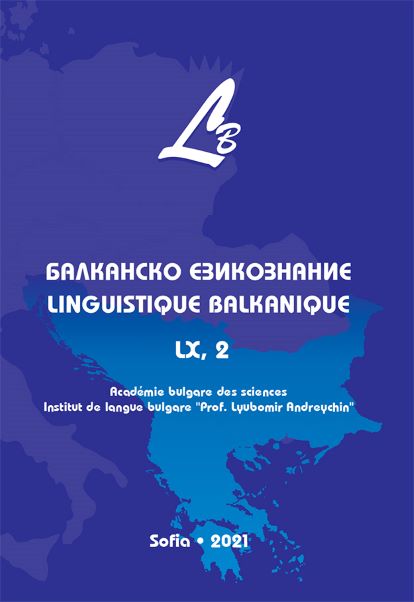
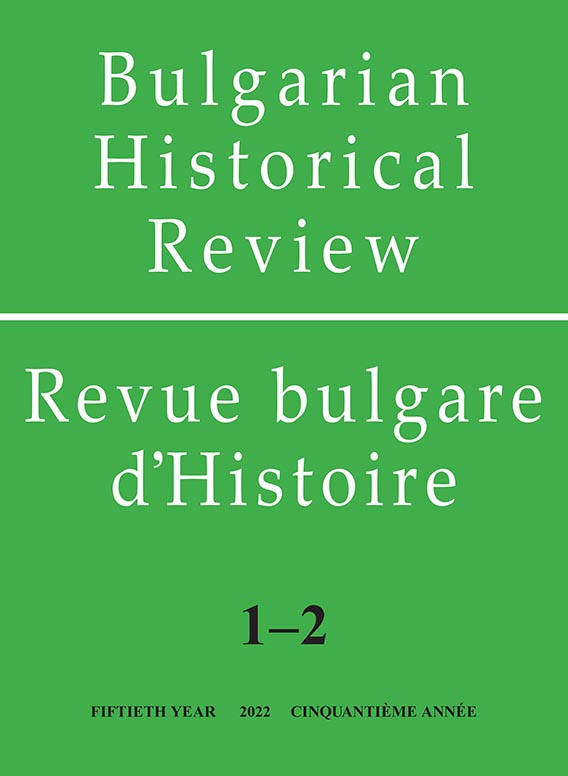
The article makes a comparative analysis of the status of land property in the Ottoman Empire (within the period from 1839 to 1878) and Bulgaria after the Liberation (1879–1912). The findings indicate significant discrepancies. While in the Ottoman Empire land property (rakaba) ideally belongs to the state, in practice the immediate agricultural producer feels a full-right owner and landlord, according to the traditional understanding of private property law. The owners’ rights are protected by a high-class procedure on issuing land ownership documents, cadaster starts to be kept (in the 1860s) and practically there is no data of social tension concerning the land status and property ownership – the state manages to cover and protect it. Contrary to this, in the Principality of Bulgaria, the newly introduced Constitution guarantees private land ownership but in practice the state administration cannot provide for it. Due to this fact, there is a lot of information on infringement and insecurity in land ownership.
More...

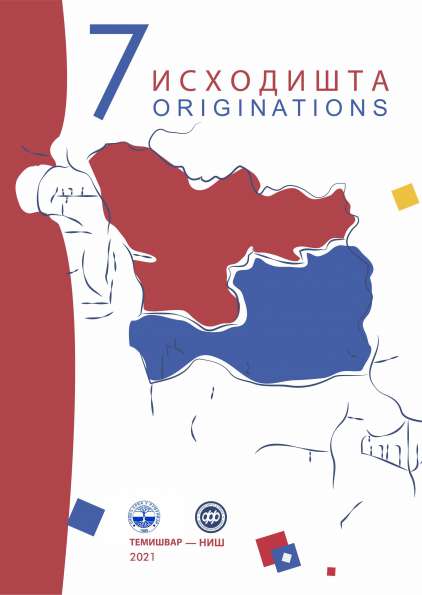
Endowment as a possessed form of charity was very much present in the life of Serbian communities. Endowments are one of the best examples of an individual's love and respect for their nationality and for the spiritual and intellectual support of Serbian youth and intellectuals. The times that followed the Second World War diminished the public's interest in this type of charity, ie the fate of these funds became uncertain until they were extinguished. Today, when they are no more, the learned good deeds and the significance they had in life testify to them the most. Archival material, as well as other rich bibliography, provide a real opportunity to present the life of these endowments and their creators, as a phenomenon of exceptional importance in the Serbian people. Leaving their endowments to those who will come into the world after them, the endowments are permanently ugly. Conscious of their presumed role in a given time and space must not replace the work of those who, through self-preservation, love for the people and their neighbors and noble feelings, considered it our duty to publish their immortal deeds.
More...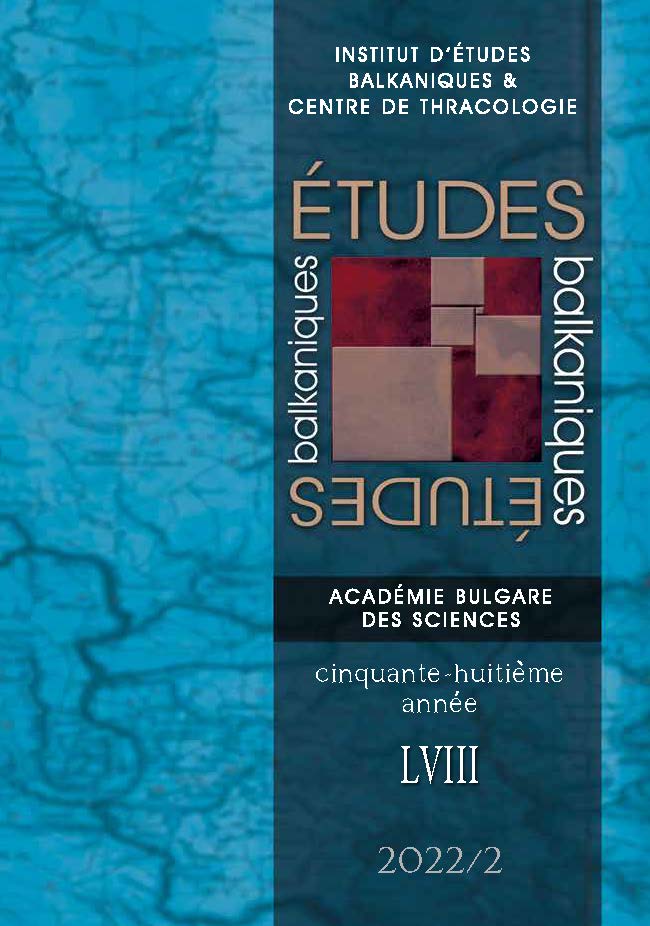
In this study I look into the behavioral pattern of the “Greek” merchants who came to Moldavia and settled in its capital, the town of Iași. The merchants were attracted by its geographical position: at the crossroad connecting centres in Transylvania or the Danube, ports of the Black Sea and towns of Poland. Because they dealt with regional trade for various merchandise, the merchants chose to invest in land, houses, stores and cellars located in the most relevant streets within the two commercial cores of the town, where they shared the space with many craftsmen, boyars but also monasteries. Whereas they represented an economic force and had money, some merchants made efforts to become boyars by purchasing villages and obtaining offices. Others chose to stay loyal to the urban world, and kept their properties across several generations and maintained their line of business. It was, thus, a very dynamic and ever-changing society, which allowed an easier transition from the structures specific to the late medieval world to the ones of modernity.
More...
Protestant religious mission in nineteenth-century Eski Zağra was carried out by the American Board of Commissioners for Foreign Missions, whose station in the town functioned between 1859 and 1877. The mission objective was spiritual reformation of the Bulgarians and the means used by the missionaries in the town included, together with preaching, educational and publication activities. Very important initiative was the organization of a girls’ school, which generated some interest among town people. But most of the missionaries’ efforts met opposition or at least indifference. Although the Americans did not achieve any considerable religious success, they had some wider cultural influence in nineteenth-century Eski Zağra.
More...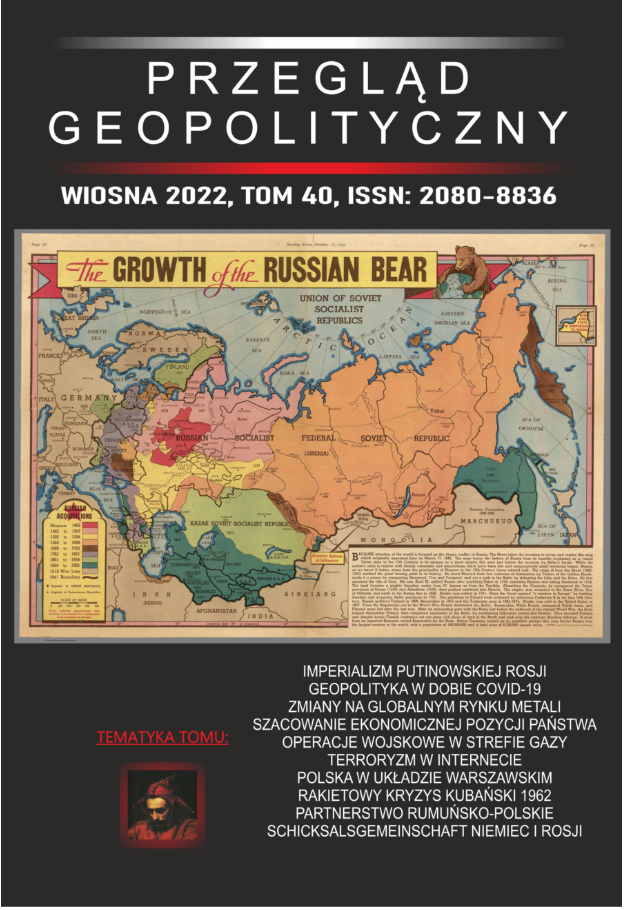
This paper explains the conditions and objectives of Russia's imperial policy during the Vladimir Putin era. For two decades (2000-2021) this policy can be described as a conglomerate of skill fully executed and mutually coordinated political and economic undertakings supported by diplomatic action. Its undisputed success was to convince the majority of the remaining participants on the international scene of the need to grant Russia the status of a global player and to approve the construction by this country of its own sphere of influence. By 2022, it was being constructed on the basis of the classical principles of strategic thinking, involving the definition of the national interest, the identification of the state's vital interests in the subject and geographic areas important for its functioning, and how to achieve well-chosen operational goals. This process was divided into specific stages, during which individual objectives were achieved, which allowed for the determination of subsequent ones, enabling the realization of the national interest. The author puts forward the thesis that the national interest of the Russian Federation is to legitimize its position as a global power, while vital interests - to obtain instruments to achieve this strategic goal. It is also acknowledged that in the construction of this policy geopolitical concepts bY Veniamin Semyonov Tenshansky and Halford John Mackinder have been adopted, especially the theses on the role of the core area and the centers enabling the creation of the necessary state potential and the principles of the functioning of a land power, and the Heartland theory with its vision of the necessary expansion into adjacent areas.
More...
With the end of the war, there was an end to cooperation between the existingallies. The division of spheres of influence in Europe, as agreed at the "Big Three"conference, began. The countries of Eastern Europe were incorporated into the sphere ofinfluence of the Soviet Union. On the other side of the Iron Curtain, the Westerncountries led to the establishment of the German Federal Republic, which soon became afull participant on the international political scene, as was confirmed by its inclusion inthe NATO political and military alliance, existing since 1949. In response to this event,the Soviet side established the Warsaw Pact, whose purpose, it was emphasized, wouldbe defense against German expansionism. In accordance with the Kremlin's decision, allmajor positions in the command system were reserved for marshals, admirals, andgenerals of the Soviet Union. The Polish side believed that the "filling" of these positionsshould be rotational. This would confirm the responsibility of all states for the state andquality of the level of combat readiness of the assigned forces. Unfortunately, the Sovietside did not accept these proposals.
More...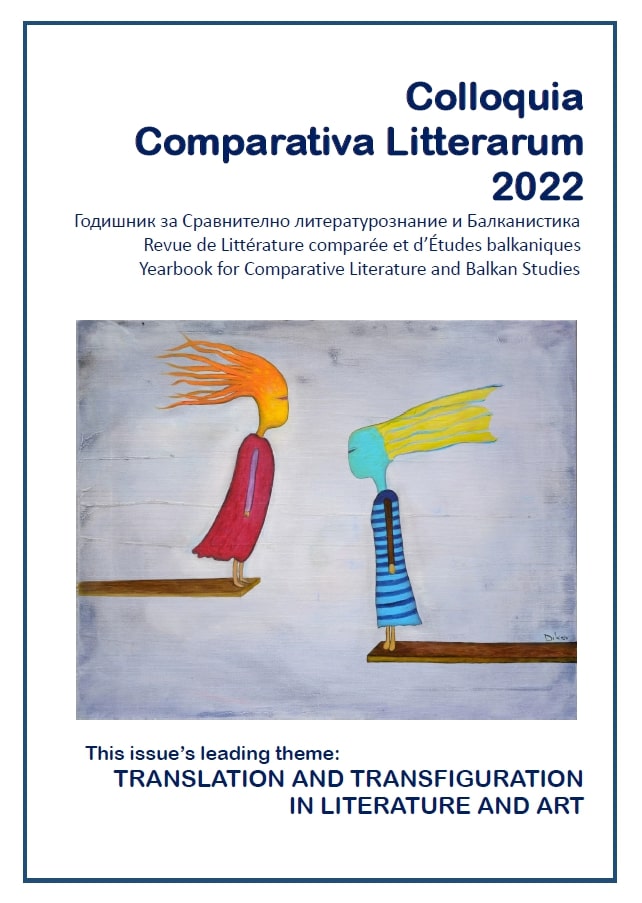
Book Review: Translation and Transfer of Knowledge in Encyclopedic Compilations, 1680-1830Translation and Transfer of Knowledge in Encyclopedic Compilations, 1680-1830, ed. by Clorinda Donato and Hans-Jürgen Lüsebrink. University of Toronto Press, 2021.
More...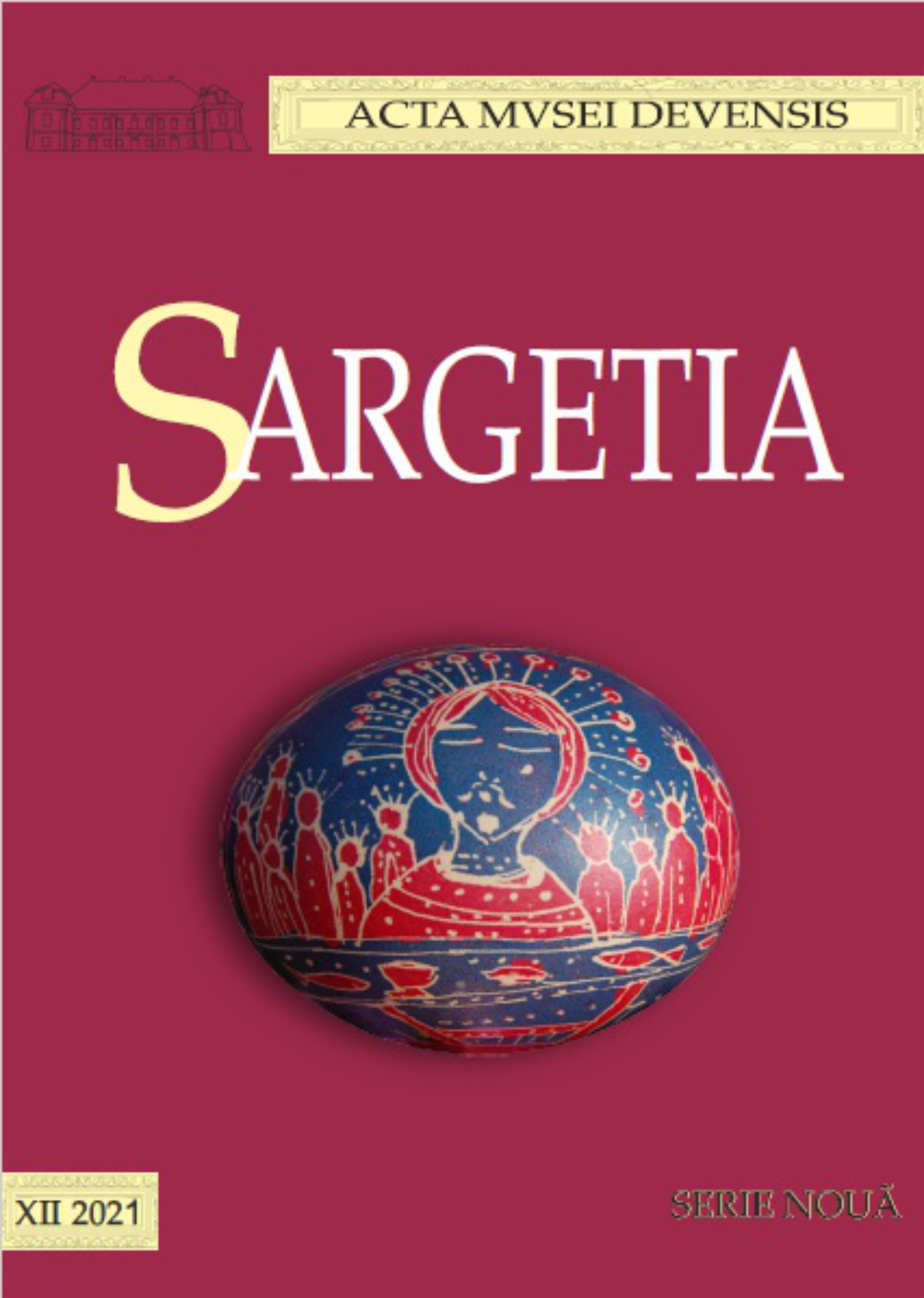
The township of Clopotiva from Hațeg County benefited from two complex studies on village life, completed in the first half of the 20th Century, under the auspice of the Romanian Academy, titled: Clopotiva: a village from Hațeg, two volumes published in 1940, in Bucharest, under the supervision of Ion Conea; together with: Anthropological Research in Hațeg Country: Clopotiva, A Monography, published in Bucharest, 1958, under advisement from Șt. M. Milcu and Horia Dumitrescu. These are references to places, habits, traditions, and family genealogies during that period, also recalling some particulars of the religious life up to that point in time.In that community there was a traditional medieval stone church. At the middle of the 16th Century, the edifice was taken over by the reformist church. However, disputes between Calvinist “Magyar Nemeși” [refers to Hungarian (Magyar) nobility] and the orthodox village congregation (latterly, The United Church) were avoided by switching ownership back and forth until the year 1759, when there was a canonic visit by bishop Petru Pavel Aron. The edifice no longer served its religious function, and was demolished in 1860, while a Calvinist church was built the same year, which was transferred to the Orthodox Church in 1957, under the protection of Pious Saint Paraskeva. Romanians were compensated for the donated edifice through a land donation from the reformed vice-chairman Pogány Iános. On that land, the present-day church was built between 1768-1770, dedicated to St. John The Baptizer, under the shepherding of united priest Ioan Popa. The church turned orthodox after 1948.This paper aims to face readers with the parochial activity in the same location - this time during the 19th Century - focusing on the Pop-Bociat religious family, which managed to leave a significant imprint (spiritual and material) on the shepherded religious community. Using novel published documents from various national archives, it was possible to recreate the blood relationship between clerics Mihail and Avel Pop-Bociat, the latter promoted parish priest in Grădiște (Sarmizegetusa) and dean of Ulpia Traiana.Of course, this presented study can be continued with dates lost in other archives, patiently waiting to be of a use which can be an enhancement - either by confirming, or contradicting hereby presentation.
More...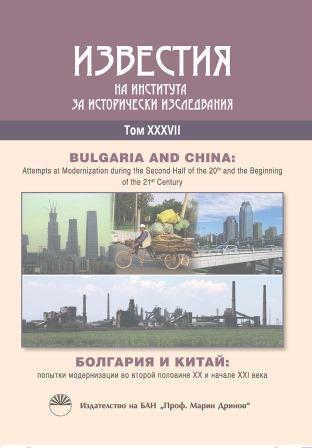
The social situation in Bulgaria after its joining the EU continued to be characterized by political instability and steady economic growth in the process of integration into the union. In view of the internal situation in the country, the Chinese government has been actively strengthening cooperation with it in the three key areas of infrastructure, renewable energy and agriculture, so as to accumulate experience and set a good example for cooperation between China and Central and Eastern European countries.
More...
The research attempts to trace the process of building a consensus on the issue of formulating a unified view on European political history. The main focus is on two main trends in this process, both of which relate to the evaluation of World War II and its results. The first trend, around which Western Europeans unite, introduces the idea about Europeans’ shared responsibility for the past in the name of the present and the future. The central symbol of this strategy is the Holocaust, which is presented as a genocide, unique in its scope and nature. The second trend is supported by Eastern Europeans, who since 1989 have been making efforts not only to reject the Soviet account of the events of WWII, but also to improve their views about its results on the West. These views boil down to the fact that they are double victims: firstly, of the Third Reich and secondly, of the Stalinist Soviet Union. Ultimately, that means equating the crimes of Nazism and Bolshevism, which in turn leads to a denial of the Holocaust’s uniqueness – a thesis that faces strong opposition in certain circles. Consequently, all this has led to a delay in the process of constructing a unified view on modern European history.
More...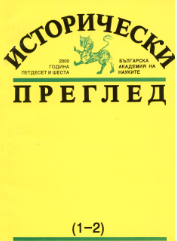


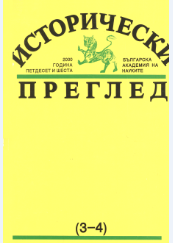
The article presents the programmes for national sovereignty of the Bulgarians launched on the pages of one of the most outstanding political newspapers published in Bulgaria in the period April 17, 1876 – August 27, 1877, the newspaper “Bulgarski Glas”, edited by the public figure Kiro Touleshkov. One of the great experts in the press of the Bulgarian National Revival, B. Andreev, characterizes the publication in question as “a purely political paper with a strong revolutionary orientation”. This qualification is true and well-grounded. The idea of an abrupt and categorical break with the structures of the Ottoman State sounds in the text or context of most publicistic material included in the pages of the “Bulgarski Glas” newspaper. Nevertheless, Kiro Touleshkov’s publication presents also the three possible alternatives for Bulgaria’s future state organization in the correlation dependence/ independence from the Turkish Sultan’s Government – administrative autonomy, political autonomy, full independence. The article interprets this phenomenon within the context of a more abstract notion of the Balkan ethnopolitical realities in the 19th century. The editor demonstrates in a convincing way that no Balkan nation has received its state sovereignty all at once and to a full degree. In a direct text or with the help of historical examples he persistently insists that the strength of the “Little” factor in “big politics” is expressed in their skill to discover the optimal prospects for solving their problems to link their plans (initiatives) and commitments with the shortest and most painless road to the mentioned optimum. Assuming also the possibility for Bulgaria not to obtain at once and in full her State independence, the publication expresses a well-measured political flexibility. And that without letting out of sight the nation’s ultimate goal: attaining full State sovereignty in the natural ethnic boundaries. By their attitude the circles standing behind the publication gave clear signals of their skill to work in a mature and responsible fashion in the field of the National Revival press.
More...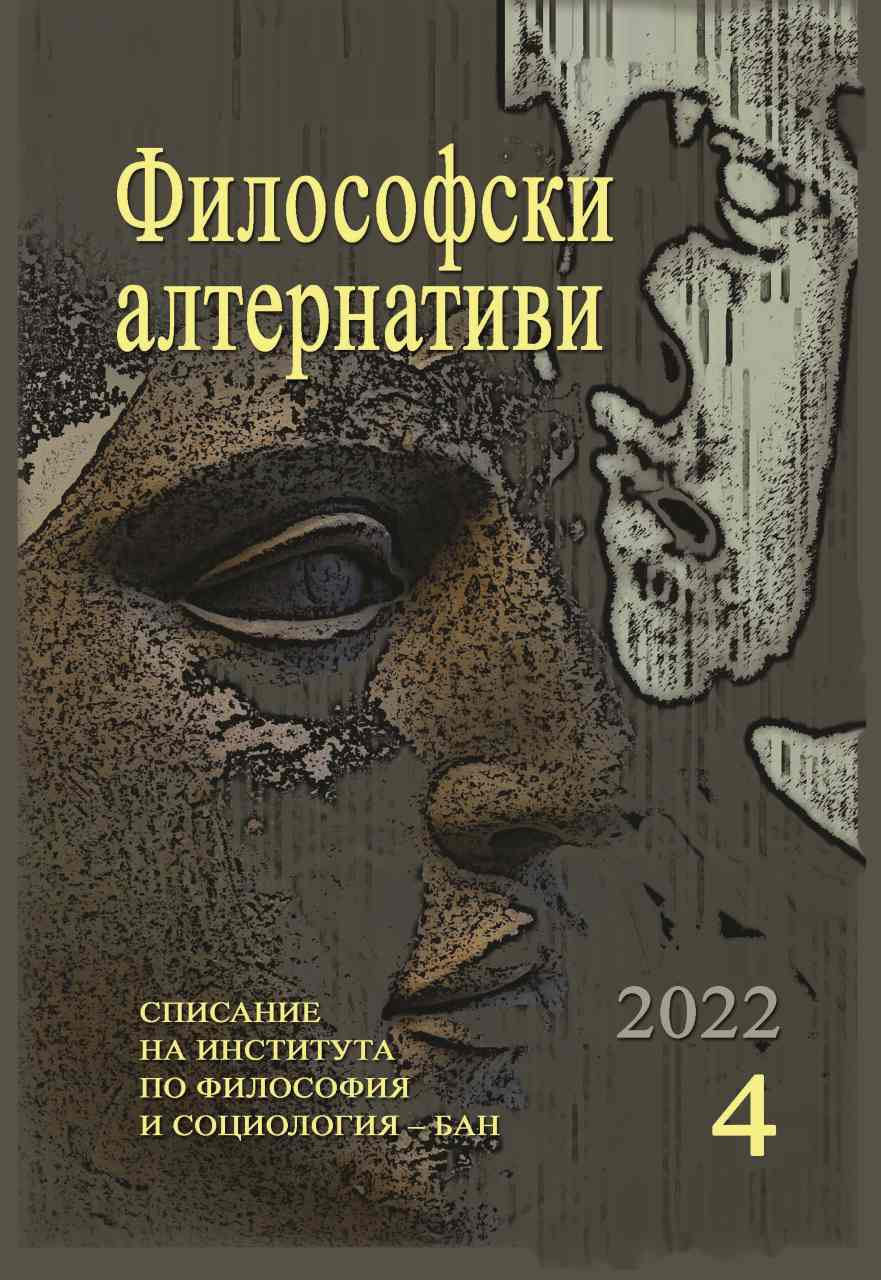
In the Information Age abstract knowledge received through media dominates over empirical knowledge derived through experience. This leads to a process of disintegration between man’s mental world and his physical environment. As architecture reflects human’s concept of the world through the current cultural paradigm, an architectural tendency towards disintegration between its ideal and its material aspects is observed today. The first part of the article examines how architectural image today tends to follow neither function, nor structure, but goes independent from them. Examples of this tendency are presented and analyzed. The term “architectural dematerialization” is classified into three types. In the second part an explanation of this tendency is proposed, together with short historical parallels from the Middle Ages to the age of Modernism. The importance of the ritual for the integration between abstract ideas and sensory experience is clarified, as well as its impact on architecture. A comparison is made between the architecture of Baroque and Modernism as a reflection of mental-sensory integrity and the world concept of these two epochs.
More...
The North Atlantic Alliance's cooperation with Ukraine allows the Treaty to redefine the basic principles on which it exists and operates. This paper traces the dynamics of NATO's relations with the former Soviet republic, covering the relations since their emergence after the collapse of the USSR. The main method used is content analysis, reviewing numerous documents that address both the original objectives that were set with NATO's founding as well as the organization's transition and its adaptation to contemporary challenges. This paper highlights the importance of Ukraine in the expansion of NATO as a community of values – a community that continues to grow and encompasses not only Eastern Europe. Since Russia's military invasion of Ukraine, the Pact has been deepening its cooperation with Ukraine while at the same time expanding to include the northern European states of Sweden and Finland, the message of the Alliance being that it is precisely due to the cooperation with Ukraine that NATO is ready to develop its potential for expansion including in its borders even the successor states of the Soviet Union. Through its relationship with Ukraine, NATO is also proving to be the most effective and robust link between Europe and North America, which share common interests and values in developing their political and strategic positions. The conclusion drawn is that despite the requests and the increased cooperation, a conservative forecast should be made regarding the possibility of Ukraine joining the North Atlantic Alliance as a full member.
More...